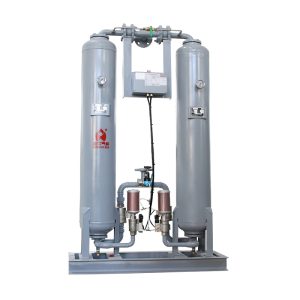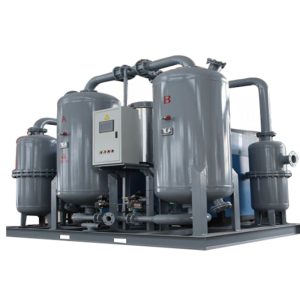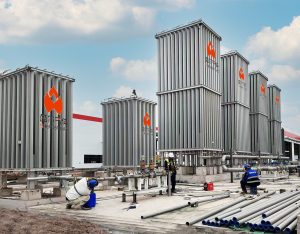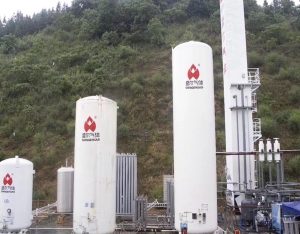 Heatless Desiccant Air Dryer is a critical component in many industrial processes, including air separation. This type of dryer operates on the principle of adsorption, utilizing a desiccant material to effectively remove moisture from compressed air without the use of external heat for regeneration. They are especially valuable in applications where very dry air is required.
Heatless Desiccant Air Dryer is a critical component in many industrial processes, including air separation. This type of dryer operates on the principle of adsorption, utilizing a desiccant material to effectively remove moisture from compressed air without the use of external heat for regeneration. They are especially valuable in applications where very dry air is required.
Key Features of Heatless Desiccant Air Dryers:
| Working pressure | 0.6 ~ 1.0 Mpa |
| Inlet temperature | ≤45℃ |
| Finished gas atmospheric pressure dew point | ≤-40℃ (alumina) ≤-60℃(molecular sieve) |
| Control mode | microcomputer automatic control |
| Working cycle | 8h |
| Regenerated steam consumption | ≤12% |
- Adsorption Method: Uses a desiccant material like activated alumina or silica gel to adsorb moisture from the air.
- No External Heat Source: Regenerates the desiccant using a portion of the dried compressed air instead of an external heat source.
- Energy Efficiency: Generally more energy-efficient than heated dryers, but the use of compressed air for regeneration can increase overall air system demand.
- Low Dew Point: Capable of achieving very low dew points, making them suitable for sensitive applications.
Applications in Air Separation:
- Ultra-Dry Air Requirements: Ideal for air separation processes that demand extremely low moisture levels to prevent freezing and maintain efficiency in cryogenic distillation.
- Reliability in Critical Processes: Offers consistent performance, crucial for continuous and reliable operation in air separation plants.
- Flexibility in Sizing and Capacity: Available in various sizes, making them adaptable to different scales of air separation units.







